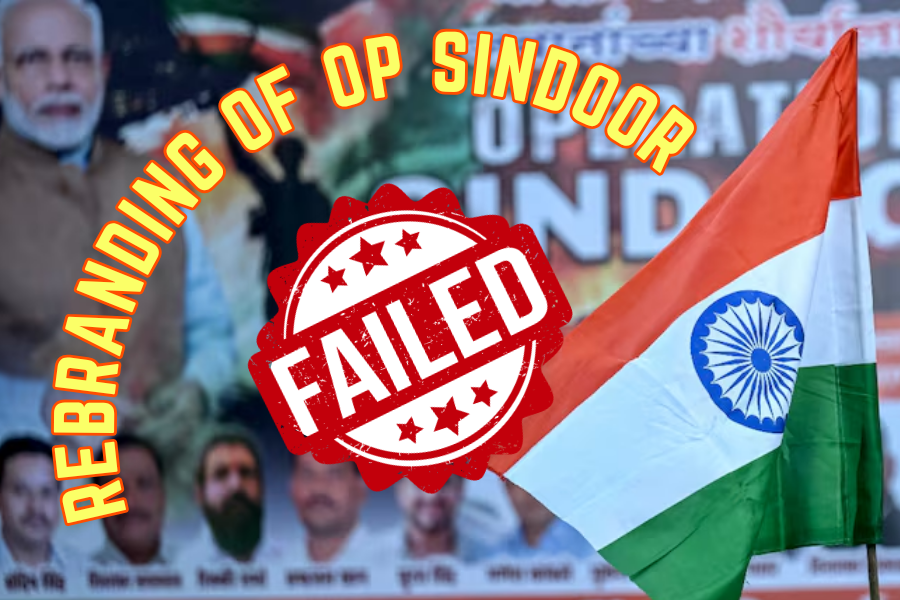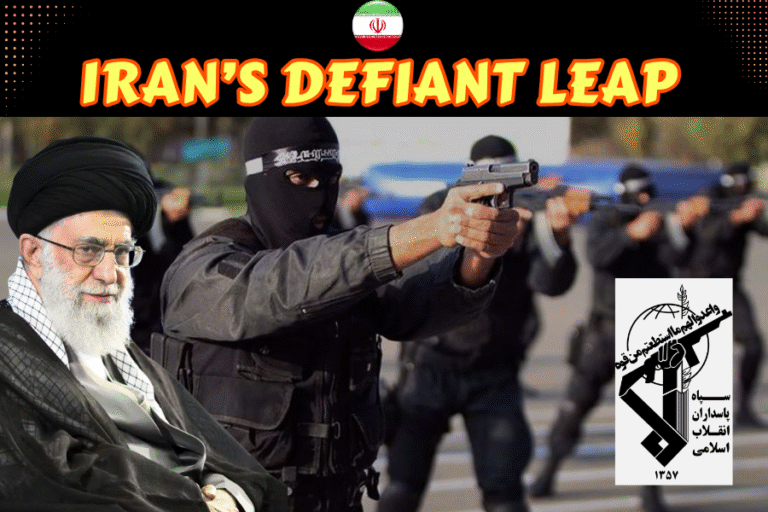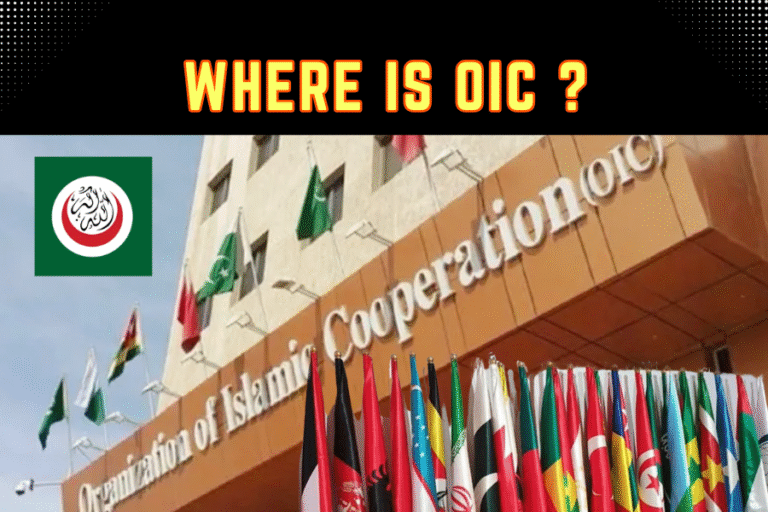(By Khalid Masood)
In May 2025, the India-Pakistan conflict escalated dramatically with India’s Operation Sindoor, a series of missile and air strikes targeting alleged terrorist infrastructure in Pakistan and Azad Kashmir. Launched in retaliation for the April 22, 2025, Pahalgam attack that killed 26 tourists, the operation was initially framed by New Delhi as a decisive blow against terrorism. However, as the dust settled, India faced significant military setbacks, diplomatic isolation, and a domestic political challenge, particularly with the Bihar elections looming. This article, grounded in subcontinental politics, geostrategy, and global diplomacy, examines India’s attempt to rebrand Operation Sindoor’s defeat as a victory, its silence on military losses, the failure of its international outreach, and the surprising U.S. tilt toward Pakistan, which has left Indian policymakers reeling.
1. Operation Sindoor: A Costly Misadventure
Operation Sindoor, launched on May 7, 2025, involved precision strikes using BrahMos missiles, Rafale jets, and Sukhoi Su-30MKIs, targeting nine sites, including terror camps in Bahawalpur, Muridke, and Muzaffarabad, and military facilities like Nur Khan airbase. India claimed to have neutralized 100–140 terrorists, including high-value targets like Yusuf Azhar, while maintaining “strategic restraint” by avoiding civilian and non-hostile military sites. However, Pakistan’s swift counterattacks, leveraging Chinese-supplied J-10C fighters and PL-15E missiles, exposed vulnerabilities in India’s air defenses. Satellite imagery and Pakistani claims confirmed damage to Indian airbases at Adampur, Suratgarh, and Sirsa, with at least three aircraft losses (a Mirage 2000H, a MiG-29UPG or Su-30MKI, and a Rafale F3R). Reports also suggested damage to a BrahMos missile storage facility at Nagrota, though India denied these claims, dismissing them as Pakistani misinformation.
Pakistan’s air defenses, bolstered by Saab Erieye AWACS and Chinese technology, intercepted Indian missiles and downed aircraft, while its retaliatory strikes killed 26–31 in Pakistan-administered Kashmir and Punjab. The Indian Air Force (IAF) faced criticism for operational errors, with Le Monde highlighting weaknesses in fleet modernization and pilot training. By May 10, a U.S.-brokered ceasefire halted hostilities, but Pakistan’s military spokesperson, Lt. Gen. Ahmed Sharif Chaudhry, claimed minimal damage to its assets, framing the operation as a Pakistani victory. India’s refusal to disclose specifics on losses—aircraft, airbases, or BrahMos missile dump at Nagrota—fueled speculation and eroded public trust, particularly as Pakistani main stream and social media amplified India’s setbacks.
2. Rebranding Defeat: The Domestic Political Gambit
With Bihar’s state elections approaching in June 2025, the Bharatiya Janata Party (BJP) sought to reframe Operation Sindoor as a triumph to bolster its campaign. Indian media, often aligned with the government, emphasized the “precision” of strikes and the elimination of terrorists, with outlets like The Times of India releasing satellite images of damaged Pakistani bases. Prime Minister Narendra Modi and Uttar Pradesh Chief Minister Yogi Adityanath hailed the operation as a demonstration of India’s resolve, with Yogi declaring, “Ask the people of Pakistan about the power of BrahMos” (Livemint, May 11, 2025). The BJP linked the operation to its strong anti-terrorism stance, aiming to rally voters in Bihar, where security and nationalism resonate.
However, this narrative clashed with ground realities. Independent analyses, including Missile Matters (May 8, 2025), confirmed Indian aircraft losses and operational missteps, undermining claims of “escalation dominance.” Social media platforms like X saw Pakistani users (@YusufDFI, May 22, 2025) and neutral observers (@Rabs_AA, May 22, 2025) questioning India’s success, while Indian accounts faced accusations of censorship for deleting reports of losses. The BJP’s strategy risked backfiring, as Bihar’s electorate, grappling with economic woes (25% unemployment, 40% below poverty line), grew skeptical of grandiose claims amid rising fuel prices and power outages linked to the conflict’s economic fallout. The Congress and Rashtriya Janata Dal (RJD) capitalized on this, demanding transparency on military losses and criticizing Modi’s “jingoistic posturing” (Rahul Gandhi, X, May 12, 2025).
3. Diplomatic Fiasco: India’s Empty-Handed Delegations
India dispatched high-level delegations to the U.S., U.K., France, Saudi Arabia, and Japan post-ceasefire, aiming to justify Operation Sindoor and garner support. National Security Advisor Ajit Doval briefed counterparts, emphasizing India’s “non-escalatory” strikes and Pakistan’s terror links (The Hindu, May 7, 2025). However, these missions yielded little. Major leaders, including U.S. President Donald Trump and U.K. Prime Minister Keir Starmer, avoided direct meetings, delegating to lower officials. Saudi Arabia and Japan issued vague calls for restraint, while France offered mild sympathy, citing India’s anti-terrorism stance (NDTV, May 7, 2025). China, Pakistan’s ally, condemned the strikes as “regrettable,” signaling its strategic tilt (Reuters, May 7, 2025).
The delegations’ failure stemmed from India’s miscalculation of global priorities. The U.S., focused on countering China and implementing Trump’s tariffs, viewed South Asian escalation as a distraction. Europe, grappling with energy crises, prioritized stability over endorsing India’s actions. India’s refusal to internationalize the Kashmir issue, a long-standing policy, clashed with its need for global backing, leaving delegations with “pomp and show” but no substantive outcomes (@soniasinghIndia, X, May 23, 2025). The UN Security Council’s muted response, shaped by China’s veto power and India’s goodwill among members, further isolated New Delhi diplomatically.
4. The U.S. Tilt: Trump’s Goodwill Toward Pakistan
India’s strategic community was stunned by U.S. statements favoring Pakistan. On May 7, 2025, Trump called the clashes “a shame” and expressed hope for a quick resolution, but by May 10, he claimed credit for brokering the ceasefire, stating, “Pakistan reached out to us after India’s strikes hit hard” (NPR, May 10, 2025). U.S. Secretary of State Marco Rubio urged both sides to de-escalate but emphasized Pakistan’s “economic challenges” and “terrorism at home,” framing it as a victim of circumstances (NDTV, May 7, 2025). Vice President J.D. Vance’s call to Modi on May 9 reportedly pressed for restraint, citing intelligence of an Indian strike near Pakistan’s nuclear storage site at Kirana Hills, which risked catastrophic escalation (Eurasia Review, May 16, 2025).
Pakistan’s diplomatic pivot was key. Islamabad leveraged its role in U.S.-Taliban talks and counterterrorism cooperation, positioning itself as a stabilizing force. Prime Minister Shehbaz Sharif’s appeal for international engagement on the Indus Waters Treaty, threatened by India’s post-Sindoor rhetoric, resonated with U.S. concerns about regional stability (India Today, May 11, 2025). Pakistan’s narrative of defending sovereignty against Indian aggression, amplified by Turkey, Qatar, and Azerbaijan, gained traction, while India’s aggressive posture alienated neutral powers. X posts (@Gokul_Sahni, May 21, 2025) noted Trump’s “hubris” in seeking a peacemaker role, frustrated by failures in Ukraine and Gaza, but India’s diplomatic missteps—overestimating Trump’s alignment with Modi—allowed Pakistan to exploit U.S. mediation.
5. India’s Silence on Military Losses
India’s refusal to address military losses—particularly aircraft (Mirage 2000H, Rafale, Su-30MKI), airbases, and the BrahMos missile dump at Nagrota —undermined its credibility. Official statements, like those from DGMO Lt. Gen. Rajiv Ghai, focused on Pakistani casualties (40 soldiers, 130–140 terrorists) and “precision” strikes, while dismissing losses as “misinformation” (Times of India, May 12, 2025). However, satellite imagery (The Hindu, May 10, 2025) and Pakistani claims (Al Jazeera, May 7, 2025) confirmed damage to IAF assets, with Le Monde reporting three aircraft losses and questioning IAF preparedness. The S-400 system’s failure to intercept Pakistani drones at Adampur and Sirsa raised doubts about India’s $5.4 billion investment (Bharat Karnad, May 14, 2025).
This opacity fueled domestic and international skepticism. In Bihar, opposition leaders like Tejashwi Yadav demanded a parliamentary session on Sindoor’s costs, citing “hidden losses” (X, May 13, 2025). Globally, India’s silence contrasted with Pakistan’s openness about civilian casualties (26–31 deaths), gaining sympathy (The Guardian, May 8, 2025). India’s narrative of “strategic restraint” (Asia Times, May 17, 2025) crumbled as analysts noted operational failures, including rules of engagement that prevented preemptive strikes, allowing Pakistan to exploit Indian airspace (Missile Matters, May 8, 2025).
6. Geostrategic Implications: A Shifting South Asian Landscape
Operation Sindoor reshaped South Asia’s geostrategic dynamics. Pakistan’s military resilience, bolstered by Chinese technology (J-10C, PL-15E), challenged India’s assumed superiority, with the IAF’s 2,200 aircraft outmaneuvered by Pakistan’s 400 (Asia Times, May 17, 2025). China’s “self-satisfied smirk” (Bharat Karnad, May 14, 2025) underscored its strategic gain, as Pakistan’s performance validated Chinese arms. India’s threat to suspend the Indus Waters Treaty, critical for Pakistan’s agriculture (70% of GDP), escalated tensions, but U.S. and UN calls for restraint limited India’s leverage (Reuters, May 7, 2025).
The Kashmir Dispute, reignited by Sindoor, drew renewed international attention. Trump’s offer to mediate, echoing his 2019 remarks, was welcomed by Pakistan but rejected by India, which views Kashmir as bilateral (The Wire, May 8, 2025). The UN’s concern, voiced by Antonio Guterres, and calls from Japan, France, and the UAE for dialogue highlighted India’s isolation (BBC Pidgin, May 7, 2025). Pakistan’s diplomatic outreach, including Sharif’s UN appeal, contrasted with India’s defensive posture, shifting global sentiment.
7. Domestic Fallout: Bihar Elections and Beyond
The BJP’s rebranding efforts aimed to salvage its Bihar campaign, where it holds 39 of 243 assembly seats. However, economic disruptions—fuel price hikes (10% post-Sindoor), power outages, and IPL cancellation—alienated voters. The RJD-Congress alliance seized on India’s losses, with Tejashwi Yadav’s rallies drawing 50,000, decrying “Modi’s failed war”. The BJP’s narrative of “crushing terrorism” (Economic Times, May 12, 2025) failed to resonate, as 60% of Biharis polled prioritized jobs over nationalism (India Today, May 20, 2025). A loss in Bihar could weaken Modi’s grip, with national elections looming in 2029.
8. Why Pakistan Won the Diplomatic War
Pakistan’s diplomatic success stemmed from:
- Counterterrorism Narrative: Framing itself as a victim of terrorism (Baloch separatists, TTP) aligned with U.S. priorities, unlike India’s aggressive strikes (NPR, May 10, 2025).
- Economic Vulnerability: Highlighting its $340 billion GDP and 8% inflation contrasted with India’s $4.27 trillion economy, eliciting U.S. sympathy (Al Jazeera, May 7, 2025).
- Indus Waters Treaty: Pakistan’s appeal for international mediation on water rights pressured India, given the treaty’s global significance (India Today, May 11, 2025).
- Allied Support: Turkey, Qatar, and Azerbaijan backed Pakistan, while India’s allies (France, Israel) offered lukewarm support (Eurasia Review, May 16, 2025).
India’s overreliance on Modi’s personal rapport with Trump, misjudging his transactional approach, and failure to counter Pakistan’s narrative on global media ceded diplomatic ground.
9. Conclusion: Lessons for India
Operation Sindoor exposed India’s strategic, military, and diplomatic vulnerabilities. The attempt to rebrand defeat as victory for Bihar’s electorate risks backfiring, as opacity on losses fuels distrust. Diplomatically, India’s isolation underscores the need for nuanced outreach beyond “pomp and show.” The U.S. tilt toward Pakistan, driven by Trump’s peacemaking ambitions and Pakistan’s deft diplomacy, highlights India’s miscalculation of global dynamics. As South Asia navigates this “new and uncomfortable chapter” India must learn from Operation Sindoor’s failures to avoid further missteps in a nuclear-shadowed region.








2 Comments